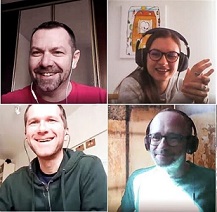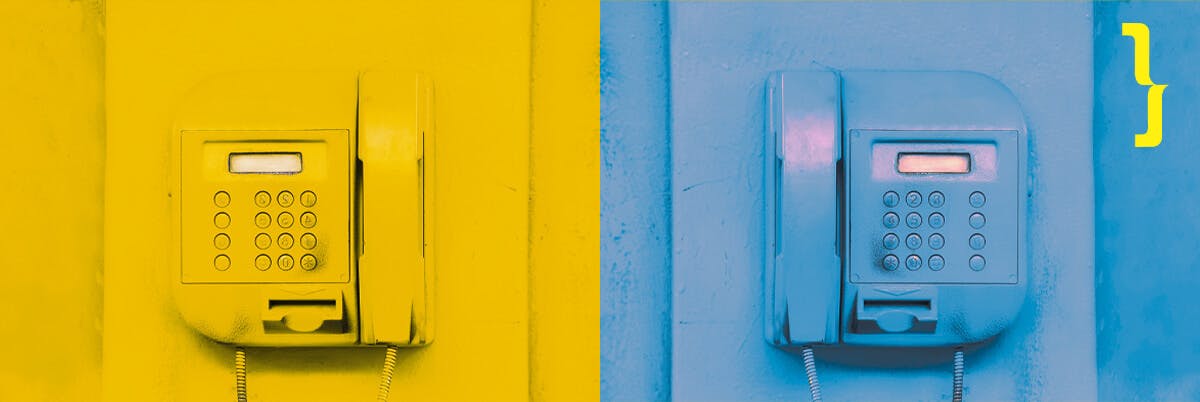All business teams are familiar with Slack, the key workplace communication program used by a lot of enterprises. But did you know that Discord is also used for internal communication? They both offer a private office server with many channels for organizing communication by team and project.
Although their platforms are similar, the two apps have significant variances. This implies that the best platform for your team will be determined by the functionality you require. Well, in general, comparing Slack to Discord doesn’t, at first glance, make sense. It’s apples to pears, but let’s compare them so you can decide which is ideal for your software development team.
The most popular communication tools in the IT industry
Slack is all-in on business. Discord, which began as a gaming platform, now wants to serve online communities in a broader sense. Isn’t it true that the categories don’t exactly overlap? However, once the branding is removed, these two programs aren’t that different. On the inside, they even resemble one another.
Depending on the group of people you want to talk to, each has a left sidebar full of icons. A list of channels follows, followed by the current chat and a right sidebar.
The parallels remain. Both tools allow teams to set up multiple text channels for communication. Both allow you to make video and voice calls. Both are used by millions of people every day.
Slack does text chat better, especially for the workplace
Text conversation looks to be easy. You input something, hit enter, and your entire team can see it. True, but put a bunch of people in a chat room, and things rapidly become unorganized. Both Slack and Discord have this in mind, although Slack appears to be a little more focused on keeping things organized – especially if you’re working with a large team.
Discord has worked very closely on this – adding threads is a significant step forward. But there are still a lot of minor things that Slack does a little bit better in terms of quality of life.
- Slack allows users to keep posts privately for future reference, whereas Discord does not.
- Slack has a Mentions & Reactions tab that lets you see where you’ve been mentioned as well as emoji reactions to your posts all in one location, but Discord doesn’t.
- Discord does not allow you to organize your sidebar with folders as Slack does.
We don’t want you to think that Discord isn’t useful. Slack simply offers a higher level of polish, which provides it an advantage in this category.

You might also be interested in our articles about:
Communication
Discord does audio and video better
Video chat and screen sharing are available in both Slack and Discord. Video calls on Slack work the same way as voice calls: simply ring up to 15 people and press the „video” button to share a video.
If you click the „video” option in Discord, you can access video chat from within voice channels.
Discord’s success is built on its audio channels. Gamers ran the service in the background on their computers so they could communicate with one another while playing online games. In that setting, audio chats must have extremely little lag, and Discord delivers it.
Slack, on the other hand, is deficient in this area. Discord’s sound quality is also considerably superior, and it has a lot more features than Slack. For example, you can change the volume for everyone in the conversation.
The two apps are converging. Discord provides users with individual audio channels that they may turn on and off at any time. It’s more like entering a room than making a phone call. This is ideal for gaming and general networking, but it’s also a fantastic co-working space. People are free to come and go as they like, and video and screen sharing are available.
Slack just introduced Huddles, a feature that works similarly to Discord’s always-on audio channels and may be used in the same way.
Which one has better integrations?
From Google Drive to Zoom, or Trello, Slack has thousands of connectors with all kinds of business apps. Discord doesn’t have any official integrations, instead of depending on bots created by third parties. These are more focused on developing communities than getting work done, which makes sense given each app’s target market.
Discord, on the other hand, is probably not the greatest choice if you rely on native integrations with SaaS apps.
There are, however, workarounds. Zapier, for example, can be used to create a Discord bot. Alternatively, you may use Zapier to connect Discord to any of your other apps, allowing you to create almost any Discord integration you can think of.
What about security?
Slack and Discord both have strong security protections, but Slack’s are more complete. Slack uses single sign-on (SSO), data encryption, and interfaces with leading DLP providers. Additionally, Slack is fully compliant with ISO/IEC 27001, 27017, and 27018, SOC 2 and 3, CSA, and EU/U.S. Privacy Shield.
SSO, 2FA, and a client-server architecture that protects your IP address are all available in Discord. Users can only join your Discord if you send out an invite link, similar to how they can join Slack. Slack and Discord both make sure that no one has been granted access to your server.
Pricing
This is where Discord shines the brightest. Discord is basically free, while Slack’s free version is limited.
Discord’s base product–text, voice, and video chat, screen sharing, and security–is completely free. This means you’ll be able to communicate with up to 250,000 coworkers for free!
On the other hand, Slack can prove quite pricey, especially for larger enterprises.
But many important features are missing from the free edition. The message archive, for example, is limited to the most recent 10,000 messages. There’s no way for an individual user to upgrade—the admin has to pay, and the price is per user.
To sum up, pricing is another example of Discord being community-minded and Slack being focused on organizations.
Slack or Discord: Which should you use?
In general, Slack is the preferable option for most organizations, but Discord is a good substitute for those that can’t afford Slack. For open-source teams and game developers, Discord is a better option than Slack. It’s especially useful for large software development teams that bring in thousands of members and need large voice and video chats to communicate.
Slack is better for corporations, whereas Discord is better for online communities. It’s exactly what they’re made for.
These tools aren’t quite interchangeable, but they’re comparable enough that you have an option. Keep the distinctions in mind.
At the end of the day, Slack vs. Discord is a battle in which the user decides the winner. What app you choose is determined by your objective, and desired outcome. And, still, some gamers prefer Slack and other business people prefer Discord. As a result, there’s no way to declare that a single software serves only one purpose.

